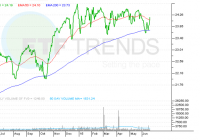After a rough patch in the first few months of the year, the consumer discretionary sector seems back on track. A stronger dollar, a harsh winter and the West coast port congestion took a toll on the performance of these stocks and gave them compelling valuations at the current level. Retail sales saw ” the first quarterly decline in almost three years” in Q1 of this year, per Bloomberg. Though the space kicked off the second quarter on an offhand mood, sales picked up momentum from May. U.S. consumer sentiment, which plunged to a six-month low in May, grew better than expected in June, going by the University of Michigan’s preliminary reading. After all, the sentiment is very strong for both the job and the housing markets, helping many to feel better about their economic situation. With rebounding U.S. economic indicators since the start of the second quarter, cyclical stocks have begun to show signs of life. Consumer stocks, especially those that center on discretionary spending, have since then been riding high. The space is also shaping up nicely for the upcoming earnings season. Total earnings are expected to be up 4.8% on revenue growth of 2.9%. For the full fiscal 2015 and 2016, the sector is likely to exhibit 9.7% and 16.2% gain in earnings on 3.4% and 6.2% revenue expansion respectively, as per Zacks Earnings Trends . To add to this, the Fed struck the space with good luck by promising a slower rate hike trajectory once the step is actually taken, most probably sometime later on in 2015. If this was not enough, the Fed has reduced the long-term rate projections for 2016 and 2017, which in turn, has spread enthusiasm among investors who started to envisage a few more months of easy money inflows. Moreover, a still subdued oil price, which is hovering around $60 per barrel, should continue to add up to consumers’ fuel price savings and encourage consumers to buy more discretionary products and services. Best Plays for Q3 Given these positive developments, a look at some of the top-ranked ETFs in the space could be a good way to target the best of the segment before stepping into Q3. In order to do this, investors can check the Zacks ETF Rank and find the top-ranked consumer discretionary ETFs best suited for their purpose. SPDR S&P Retail ETF (NYSEARCA: XRT ) This product tracks the S&P Retail Select Industry Index, holding 104 securities in its basket. The fund charges 35 bps in fees. It is widely spread across each component, as none of these holds more than 1.16% of total assets. Sector-wise, apparel retail takes the top spot at around one-fourth share, while specialty stores, Internet retail and automotive retail also have double-digit allocation each. XRT is a popular and actively traded ETF in the retail space, with AUM of about $1.31 billion and average daily volume of nearly 2.2 million shares. The fund has a Zacks ETF Rank of 1 (Strong Buy), with a Medium risk outlook and a year-to-date return of about 5%. First Trust Consumer Discretionary AlphaDEX ETF (NYSEARCA: FXD ) This is one of the more popular and liquid ETFs in the consumer space, with AUM of $2.63 billion and an expense ratio of 0.70%. The fund follows an AlphaDEX methodology and ranks the stocks in the space by various growth and value factors, eliminating the bottom-ranked 25% of the stocks. This approach results in a basket of 135 stocks that are invested in various market spectrums. Each security holds not more than 1.47% of assets. Specialty retail is the top sector with about one-fourth allocation, followed by media (13.1%) and household durables (10.6%). The ETF has added more than 4.6% so far this year. FXD has a Zacks ETF Rank #1 with a Medium risk outlook. iShares U.S. Consumer Services ETF (NYSEARCA: IYC ) IYC targets the Dow Jones US Consumer Services Index. The 178-stock fund has accumulated about $1.09 billion in assets. It has moderate company-specific concentration risk, with the top holding, Walt Disney (NYSE: DIS ), accounting for 5.72% share of the basket. The fund charges 43 bps in fees. It has a tilt toward retail (33.03%) and media (26.67%) stocks. So far this year, the fund is up 6.6%, and it has a Zacks ETF Rank #1 with a Medium risk outlook. Original Post

